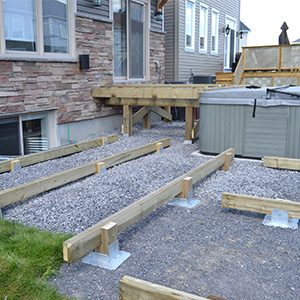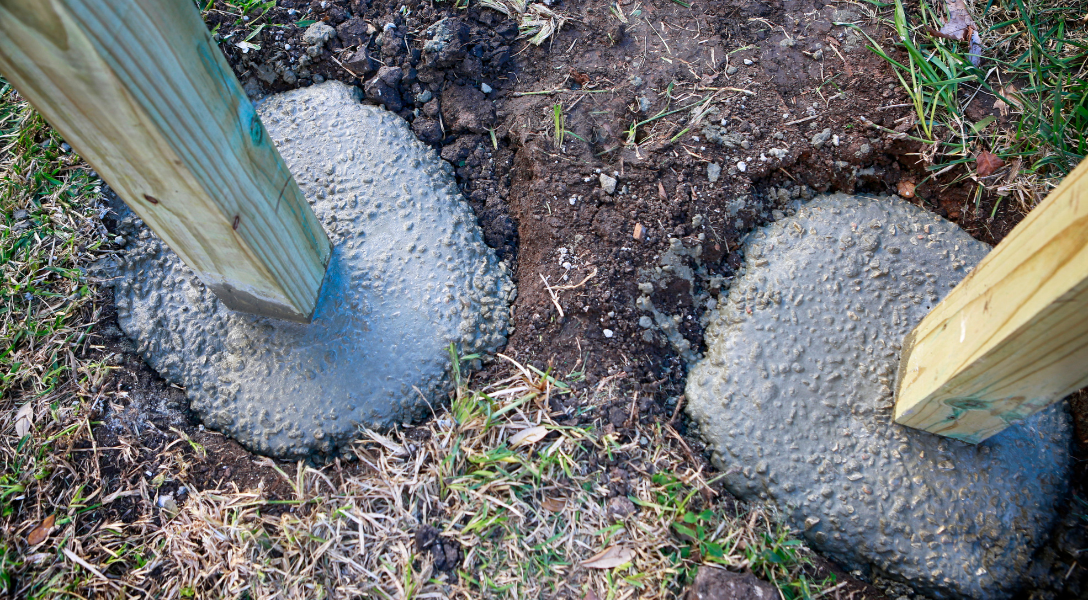Deck Footings Unveiled: Recognizing the Secret Parts of a Trusted Deck Structure
Deck Footings Unveiled: Recognizing the Secret Parts of a Trusted Deck Structure
Blog Article
Selecting the Right Deck Footings for Stability and Durability
The durability and security of your deck depend heavily on the type of grounds you choose, as they give the crucial support and security to hold up against the examination of time. In this conversation, we will discover the different kinds of deck footings, take into consideration the vital elements to weigh when making a decision, and delve right into the pros and disadvantages of different options.
Sorts Of Deck Footings
There are a number of kinds of deck grounds that can be utilized, each offering special benefits and considerations. One typical sort of ground is the concrete pier ground. These footings contain a round hole full of concrete, which gives a solid foundation for the deck messages. Concrete pier footings are relatively simple to set up and use excellent security, making them a preferred choice for lots of deck projects.
An additional kind of ground is the helical pile ground. Helical piles are steel shafts with helical plates attached to them. These grounds are set up by screwing them right into the ground, which creates a secure foundation for the deck. Helical stack grounds are ideal for areas with challenging soil problems, as they can be set up in practically any type of sort of dirt. They likewise enable simple change and leveling of the deck if needed.
Additionally, some builders choose for precast concrete grounds. These grounds are made from sturdy concrete and can be found in numerous shapes and sizes to fit different deck layouts. Precast concrete footings are practical to set up and provide a steady base for the deck structure.
Ultimately, one more option is the post-in-anchor footing system. This type of footing involves driving a metal support into the ground and affixing it to the deck message. It offers versatility in regards to positioning the deck messages and is appropriate for decks with lightweight frameworks.
When choosing the appropriate kind of deck footing, it is vital to consider factors such as dirt conditions, deck load, and local building regulations (Deck Footings). Consulting with an expert contractor or structural engineer can help ensure the suitable footing is selected for a safe and secure deck
Variables to Take Into Consideration When Picking Grounds
When choosing the ideal grounds for a deck, it is essential to carefully take into consideration various elements such as dirt conditions, deck tons, and adherence to neighborhood structure codes. These variables play a significant role in making sure the security and longevity of the deck structure.
Among the main aspects to consider is the soil conditions. The sort of dirt on which the deck will certainly be constructed establishes the sort of footings called for. For circumstances, decks improved loosened or sandy soils might require much deeper footings to give ample support and prevent settling. On the other hand, decks built on clay or large soils might require grounds that can accommodate the soil's tendency to broaden and contract.
Another essential aspect is the deck lots. The weight of the deck, including the materials utilized and any type of prospective real-time tons such as furniture or events, must be thought about when choosing grounds. The footings have to be designed to birth the weight of the deck and disperse it evenly to avoid any type of architectural concerns or failures.
Lastly, adherence to neighborhood structure codes is extremely important. Structure codes differ from area to area, and it is crucial to adhere to the specific requirements set by the neighborhood authorities. Deck Footings. These codes ensure that the deck is built safely and fulfills the required standards for architectural stability and load-bearing capability
Concrete Grounds: Cons and pros

Concrete grounds supply several advantages and negative aspects when made use of as the structure for a deck. On the positive side, concrete grounds anonymous supply superb stability and resilience.
One more benefit of concrete footings is their convenience. They can be put into various sizes and shapes to suit different deck designs and arrangements. Concrete footings can be personalized to fit the specific requirements and requirements of more tips here the deck structure.
Nevertheless, there are additionally some drawbacks to making use of concrete grounds. One major drawback is the cost and labor associated with their installation. Concrete grounds need excavation and frequently require the aid of heavy equipment. This can boost the overall price of the deck task and may need professional help.

Helical Piers Vs. Sonotubes: Which Is Better?
In considering the structure choices for a deck, the contrast in between helical piers and sonotubes is vital in identifying the superior option. Helical piers, also referred to as screw stacks, are steel shafts with helical plates affixed to them. They are turned right into the ground using hydraulic equipment, providing a steady and durable structure for the deck. On the various other hand, sonotubes are cylindrical kinds made of cardboard or fiber product that are filled up with concrete. They are positioned in a hole explored the ground and offer assistance for the deck.
The helical plates on the piers produce a solid hold with the dirt, shifting or stopping any activity of the deck. Sonotubes, on the other hand, rely only on the concrete filling up for stability, which might not use the exact same level of strength and resistance.
In terms of installation, helical piers are reasonably much easier and faster to mount compared to sonotubes. The hydraulic machinery used to turn the piers into the ground ensures a fast and reliable procedure. Sonotubes, on the other hand, require excavating holes and putting concrete, which can be labor-intensive and taxing.
Additionally, helical piers are an even more versatile choice. They can be used in numerous dirt conditions and can be adjusted or enhanced if needed. Sonotubes, on the various other hand, may need additional check this site out support, such as rebar, in particular soil conditions or locations with high load needs.
Selecting the Right Footings for Your Deck's Dimensions
For optimal structural honesty, it is vital to very carefully pick the proper grounds that line up with the dimensions of your deck. The measurements of your deck, including its width, height, and size, play a substantial duty in identifying the kind and dimension of grounds needed.
When selecting grounds for your deck, it is necessary to take into consideration the load-bearing capacity of the soil. The weight of the deck, integrated with the weight of any furnishings or individuals on it, applies a substantial pressure on the footings (Deck Footings). It is vital to select footings that can effectively sustain this weight without sinking or shifting over time.
Larger decks with higher dimensions call for bigger footings to provide sufficient security and support. The form of the grounds, whether they are square or round, depends on the design and layout of the deck.
Conclusion
To conclude, choosing the right deck grounds is vital for making certain stability and toughness. Aspects such as the type of footings, the deck's dimensions, and the advantages and disadvantages of various options must be taken into consideration. Concrete grounds use strength and longevity, yet might be much more pricey and time-consuming to install. Helical piers and sonotubes have their very own advantages and disadvantages. Inevitably, choosing the suitable grounds for your deck's certain requirements is crucial for a effective and durable framework.
These footings consist of a cylindrical opening filled with concrete, which offers a strong foundation for the deck messages. Concrete pier grounds are fairly simple to mount and use exceptional stability, making them a preferred option for many deck projects.
Precast concrete footings are practical to mount and provide a steady base for the deck framework.
It uses versatility in terms of placing the deck articles and is appropriate for decks with lightweight structures.
Concrete grounds supply numerous benefits and negative aspects when made use of as the structure for a deck.
Report this page